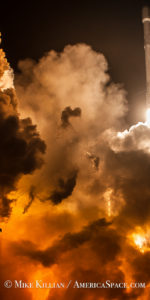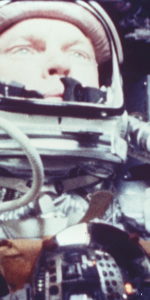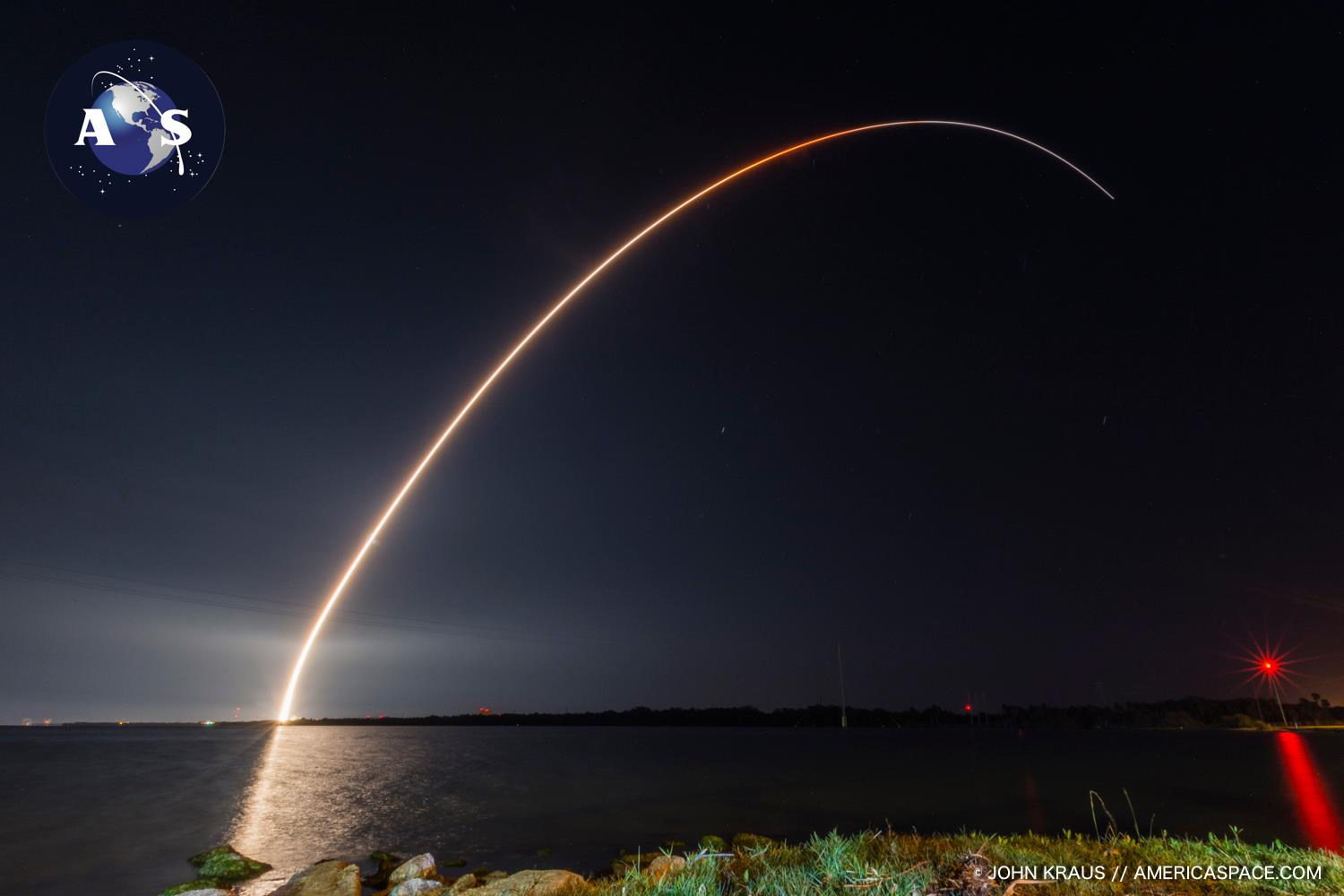
The most powerful Boeing/Air Force military communications spacecraft ever launched—the WGS 8 Wideband Global Satcom—is climbing in its super synchronous transfer orbit following a successful launch last night (Dec. 7) on board a United Launch Alliance (ULA) Delta IV Medium+ rocket from Cape Canaveral Air Force Station, Fla.
The spectacular night liftoff into mostly clear skies from Launch Complex 37 came at 6:53 p.m. EST, at the opening of a 49-minute launch window. The flight marks 10 years of ULA flight operations with the Delta IV, Delta II, Atlas V, and Russian Proton rockets.
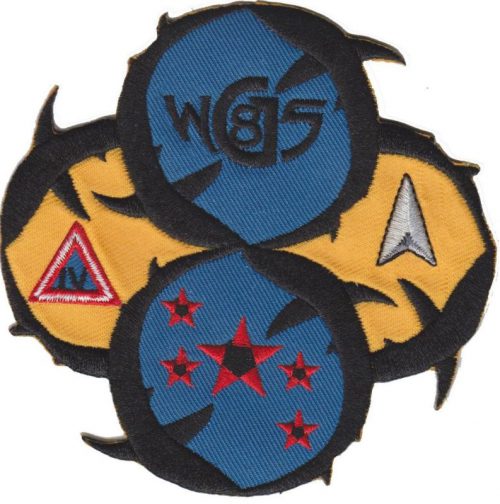
With growing Russian and Chinese threats to U.S. satellites in geosynchronous orbit, the Air Force is keeping the Boeing WGS-8 checkout location and later operational location secret. Once at the operational site in several months, the satellite will be commanded by the 3rd Space Operations Sqd. at Schriever AFB, outside Colorado Springs, Colo.
The Delta IV Medium+ vehicle lifted off from Launch Complex 37 on 1.47-million-lb thrust, from the core vehicle’s 702,000-lb thrust Aerojet Rocketdyne RS-68A oxygen/hydrogen engine and four Orbital/ATK GEM 60 strap on boosters with 191,425-lb thrust each.
“It is absolutely imperative that U.S. troops and allied forces deployed worldwide receive information in the fastest way possible,” said Aerojet Rocketdyne CEO and President Eileen Drake. “We are honored to provide the launch and spacecraft propulsion capabilities to help place these critical satellites into orbit.”
The rapidly climbing vehicle throttled back momentarily to go through max-Q at 46 seconds, as it headed east into an equatorial orbit.
The four solids burned out and separated in pairs just past the 90-second mark in the ascent, followed by the 5-meter faring separation at 3 minutes, 14 seconds.
The burnout and separation of the first stage and its RS-68A engine occurred at 4 minutes, 15 seconds, near the northern Bahamas.
The Delta IV’s cryogenic second stage, with an Aerojet Rocketdyne 24,750-lb thrust RL10B-2 engine, was then ignited for nearly a 16-minute firing to power the vehicle across the Atlantic at 110-120 naut mile altitude. That burn ended just south of Cape Verde off the West African bulge.
The vehicle then coasted down the West African coast until the second stage aimed southeast ignited for a second time, burning 3 minutes, 18 seconds, until 33 minutes into the flight, when it cutoff over south central Africa. This burn established the satellite toward a 27,575-mile apogee in its super synchronous transfer orbit.
The vehicle then coasted across south central Africa until it exited the southeast African coast, flying just east of Madagascar where the $426 million spacecraft was released 42 minutes after liftoff.
“For a decade, our ULA team has made the ordinary, extraordinary,” said Tory Bruno, president and CEO of ULA. “I am grateful to all of our employees and industry partners for their unwavering dedication to mission success. Over the last 10 years, ULA has launched 71 national security missions, 28 NASA missions and 14 commercial missions that save lives, explore the universe and connect the world.”
In 2014, ULA embarked on a multi-year transformation to cut the price of launch services in half, making space more accessible and affordable. In addition, ULA has cut the time it takes to assemble the rocket with the spacecraft at the launch site and fly by more than two thirds, and it has entered into strategic partnerships with key suppliers which have reduced the supply chain cost by 36 percent.
“Thanks to the hard work accomplished by the team, we are well on our way to a sub $100 million rocket launch service,” said Bruno.
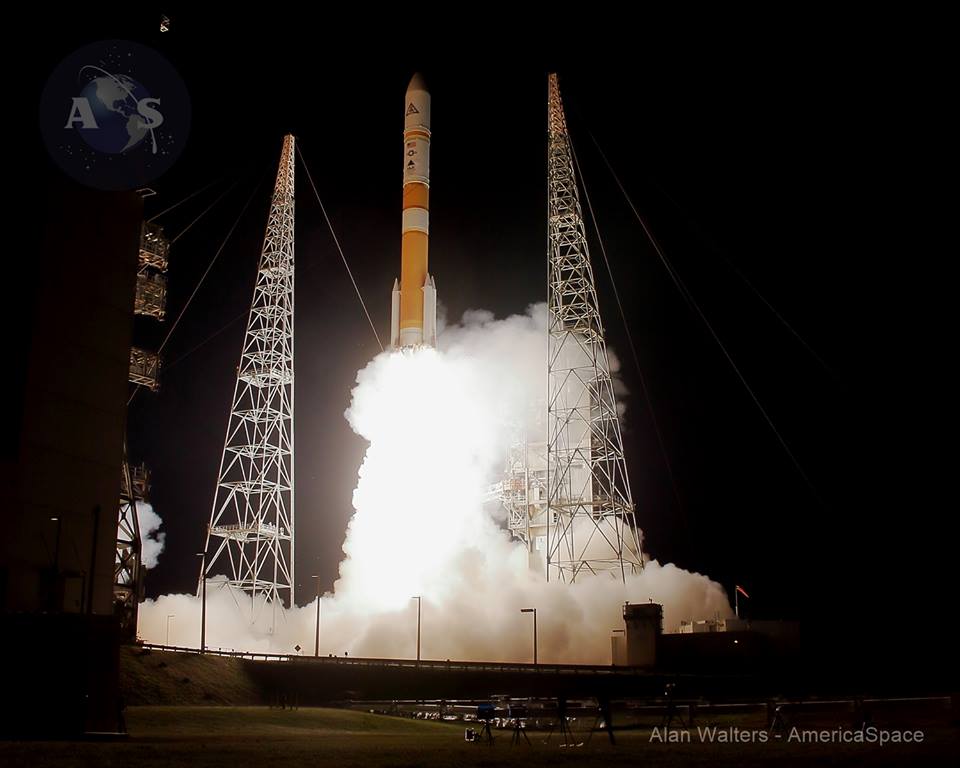
“This launch will significantly enhance the WGS constellation, providing vital wideband communications anytime, anywhere to U.S. warfighters and our international partners through broadcast, multicast, and point to point connections,” said Lt. Gen. Samuel Greaves, Space and Missile Systems Center (SMC) commander and Air Force program executive officer for Space.
“The demand for ever-increasing reliable and secure satellite communications has been at the forefront of the WGS mission,” said Greaves. “WGS provides communication connectivity across all mission areas, including air, land, and naval warfare.”
“WGS-8 maintains the core capability to support X and Ka-band communications simultaneously, while also increasing communication capacity,” Greaves said.
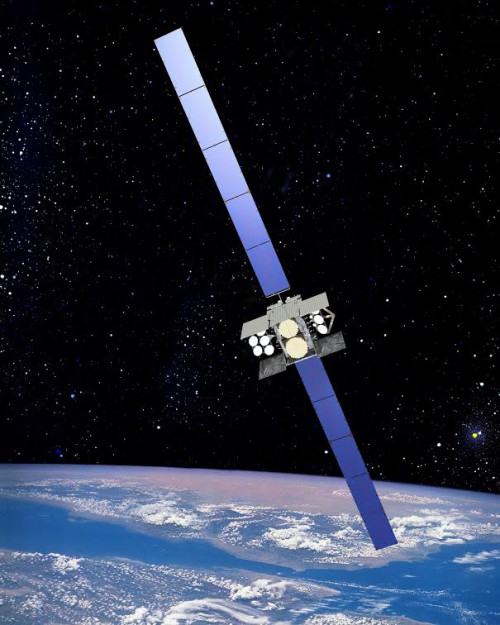
The Air Force’s 45th Space Wing and ULA managed this eighth in a series of 10 WGS satellites that has the U.S., Australia, and Canada as primary partners, with Canada leading a consortium of European nations paying for WGS 9, set for launch in March 2017 on another Delta IV Medium+.
Each WGS satellite provides high capacity service in both the X and Ka frequency bands, with the unprecedented ability to cross connect between the two frequencies.
According to Greaves, a new state-of-the-art Generation 6 digital channelizer will increase communication capacity by approximately 45 percent more than previous WGS satellites. It essentially doubles the bandwidth available compared with the previous seven WGS satellites.
“The WGS constellation is the nation’s highest-capacity military communication system, providing a quantum leap in communication capability for the U.S. military and allied forces. This vital asset continually collects and routes real-time data through all X-band and Ka-band terminal types in support of a wide variety of missions, from search and rescue efforts to military operations,” Greaves said.
WGS has 19 independent coverage areas, 18 of which can be positioned throughout its field-of-view. This includes eight steerable/shapeable X-band beams formed by two large separate transmit/receive phased array antennas along with 10 smaller Ka-band beams that can be individually steered where needed. There is also one transmit/ receive X-band Earth-coverage beam that provides anti-jam capabilities across the X and Ka band communications suite.
Dr. Walt Lauderdale, Technical Director for the Evolved Expendable Launch Vehicle (EELV) Program at the Launch Systems Enterprise Directorate for SMC, said the Delta IV for the WGS-8 launch underwent a series of wellness checks during its lifetime: “We conducted 148 hardware pedigree reviews, 369 data package reviews along with 105 launch vehicle verification tasks, and validation of 105 rocket-to-satellite interface requirements.”
The flight was the first in many years where journalists were not allowed into Cape Canaveral Air Force Station to view the launch from up close, besides the SpaceX booster landing after launching 11 Orbcomm satellites in December 2015. The reason was because winds were out of the north. Had a launch failure occurred the north winds could have blown debris and toxic satellite propellants over the media locations.
.
Be sure to “LIKE” AmericaSpace on Facebook and follow us on Instagram & Twitter!
.
Missions » WGS » WGS-8 »



